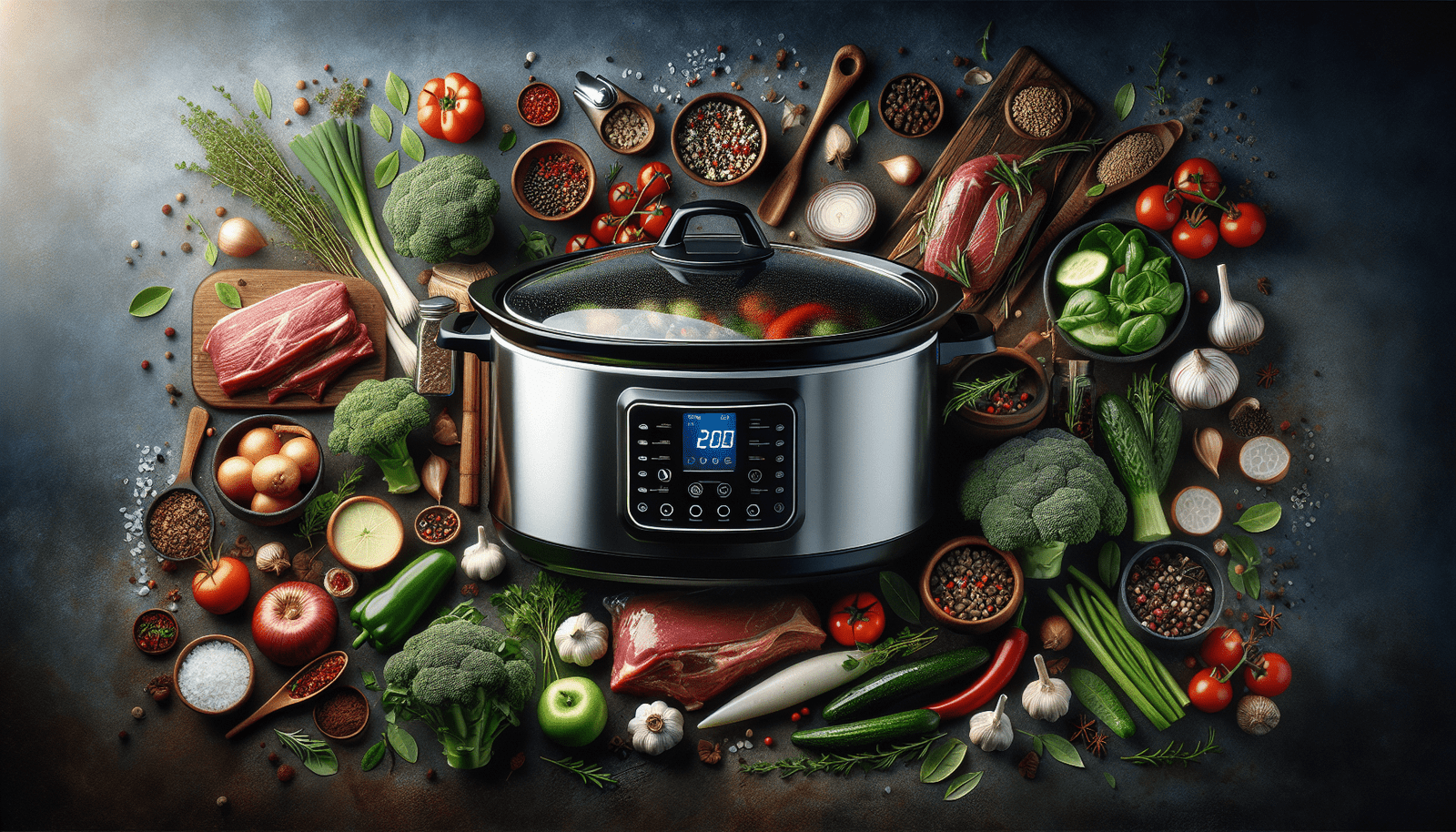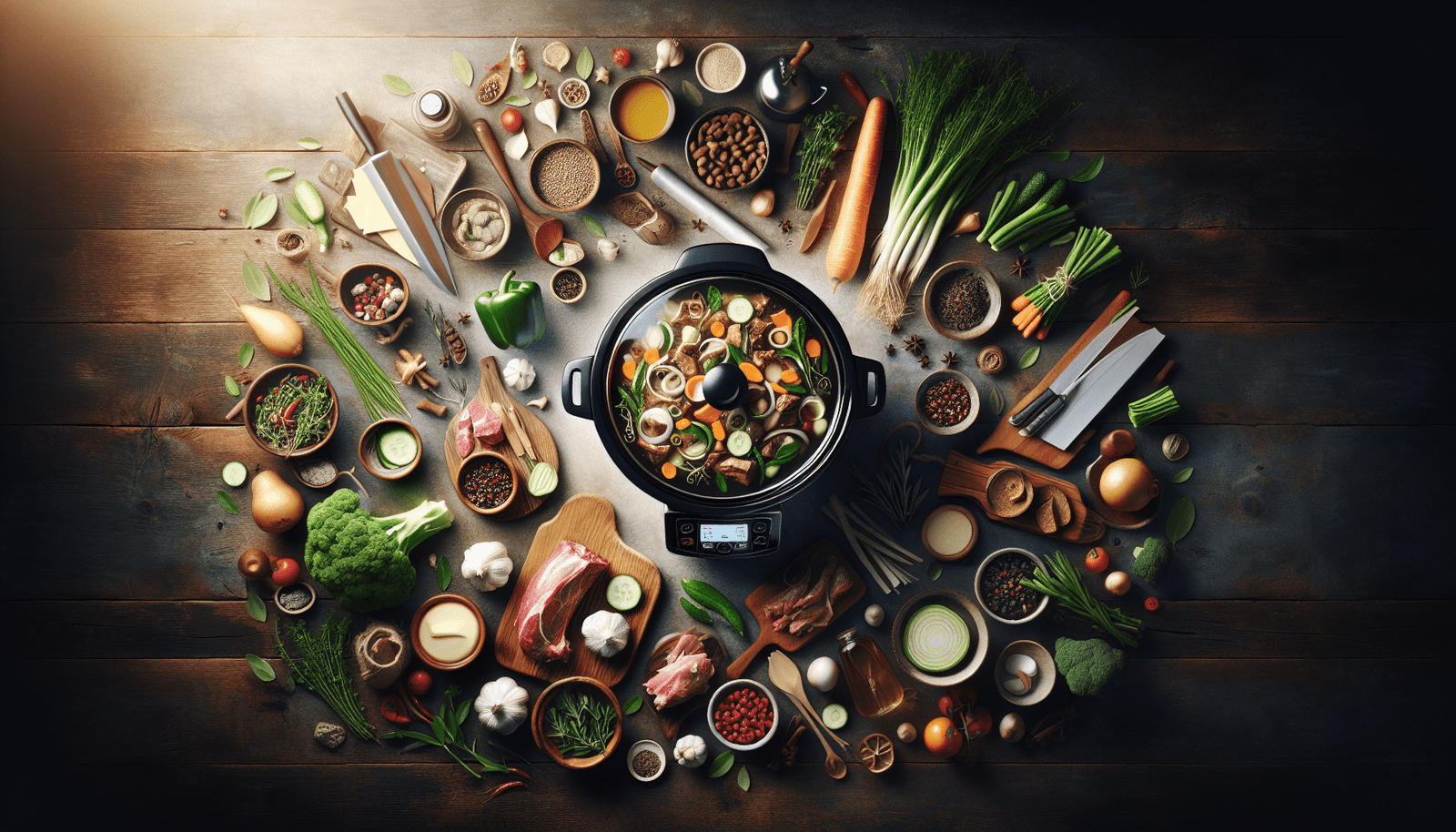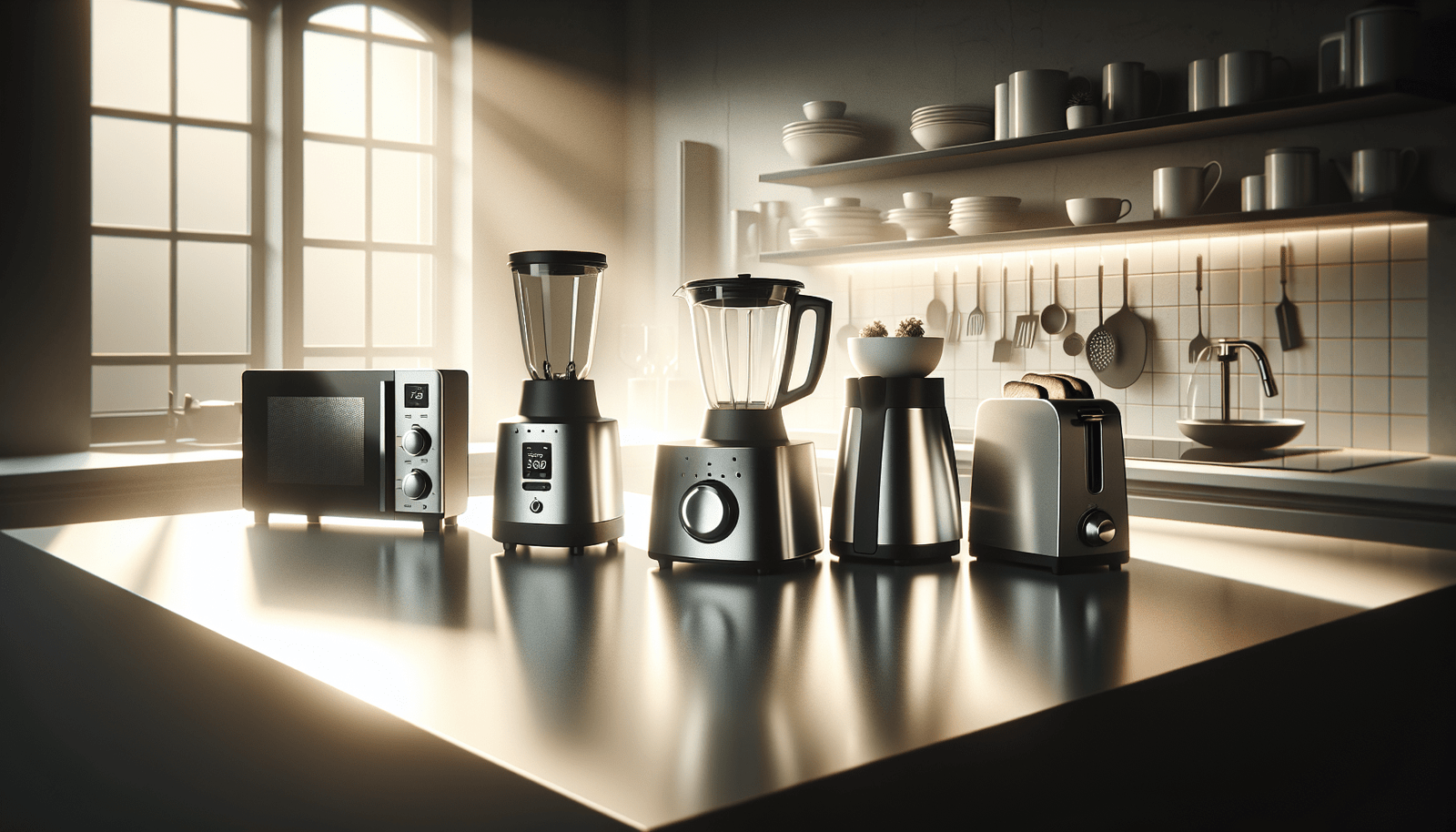If you’ve ever dreamed of coming home to the welcoming aroma of a home-cooked meal without spending hours in the kitchen, “The Art of Slow Cooking: Slow Cookers Simplified” is your guide to making that dream a reality. Embracing the magic of slow cookers not only transforms your approach to mealtime but allows you to unlock the full potential of your culinary skills with ease and efficiency. As part of Cooking Appliance World’s commitment to advancing your cooking experience, this guide offers you a treasure trove of knowledge. From unraveling the capabilities of the latest slow cooker models to providing savory recipes that will delight your taste buds, it ensures that premium kitchen solutions are always at your fingertips. Elevate your cooking game and embrace the simplicity of slow cooking to create mouthwatering dishes that bring joy and comfort to your dining table.
Understanding Slow Cooking
Definition and Basics of Slow Cooking
Slow cooking involves preparing meals at low temperatures for extended periods, allowing flavors to deeply infuse and tenderize even the toughest cuts of meat. It’s a technique that turns simple ingredients into comforting and delicious dishes with minimal effort. The process is mostly hands-off, giving you the freedom to go about your day while your meal cooks to perfection.
Benefits of Using a Slow Cooker
Using a slow cooker comes with an array of benefits. It’s energy-efficient, using less electricity than an oven. Meals require less monitoring, reducing the risk of overcooking. Slow cooking also enhances flavors, melds ingredients beautifully, and retains the nutritional value of foods by cooking at lower temperatures.
Different Types of Slow Cookers
Slow cookers come in various sizes and styles, from basic models with simple dials to sophisticated programmable ones that offer multiple cooking modes. Some have sear functions, allowing you to brown meat directly in the pot before slow cooking, while others feature removable pots suitable for serving.
How Slow Cooking Preserves Nutrients
The gentle cooking method of slow cookers helps to preserve vitamins and minerals that are often lost through high-temperature cooking methods. By using low heat and cooking in sealed containers, slow cookers minimize oxidation and nutrient degradation, making meals not just tasty but healthier.
Selecting Your Slow Cooker
Factors to Consider When Buying a Slow Cooker
When choosing a slow cooker, consider capacity, settings, and ease of cleaning. Think about your cooking habits and the number of people you usually cook for. Also, look for models with dishwasher-safe inserts to make cleanup a breeze.
Best Brands and Models in 2023
In 2023, brands like Crock-Pot, Instant Pot, and Hamilton Beach lead the market with innovative models that cater to various cooking needs. Favorites include programmable options with smart features that allow control via smartphone apps, offering convenience and precision.
Size and Capacity: Matching Your Needs
Choosing the right size is crucial. A small 3-quart model suffices for singles or couples, while larger families or those who entertain often may prefer 6 to 8-quart models. Consider how much space the appliance will occupy, both in storage and when in use.
Features and Settings to Look For
Opt for slow cookers with multiple heat settings (low, medium, high) and programmable timers to ensure flexibility. Keep warm function is a must-have for keeping food at the right temperature until you’re ready to eat. Also, a digital display can add convenience by clearly showing cooking times and settings.

Preparation for Slow Cooking
Gathering Ingredients: What Works Best
Slow cookers are versatile, ideal for a wide range of ingredients. Root vegetables, tough cuts of meat, and legumes thrive in slow cooking, breaking down over hours to achieve the perfect texture. Soft vegetables and delicate proteins should be added later in the cooking process to avoid overcooking.
Prepping Meat and Vegetables for Slow Cooking
For the best results, cut ingredients into uniform sizes to ensure even cooking. Browning meat before adding it to the cooker can enhance flavor through caramelization. Regarding vegetables, harder ones like carrots and potatoes should go at the bottom, closer to the heat source.
Tips for Layering Ingredients
Always start with the densest and slowest cooking ingredients at the bottom, gradually working up to the more delicate items. This ensures that everything cooks evenly and finishes at the same time without turning mushy.
Importance of Liquid in Slow Cooking
Liquid is essential in slow cooking, creating steam and maintaining temperature for cooking. It’s also the medium that allows flavors to meld beautifully. However, because there’s little evaporation, it’s crucial not to overdo it. A good rule of thumb is to fill the cooker one-half to two-thirds full.
Mastering Slow Cooker Settings
Understanding the Different Settings
Slow cookers typically come with at least two settings: low and high. The low setting is perfect for longer cooking times (8+ hours), while the high setting cuts the cooking time in half. Some models offer a medium or simmer option for more control.
When to Use Low vs. High Temperature
Use the low setting for dishes that benefit from gentle, prolonged cooking, like beef stew or chili. The high setting is suitable for recipes that require shorter cooking times or when you’re short on time. Remember, cooking on low is the essence of slow cooking, enhancing flavor and texture.
Advantages of Programmable Slow Cookers
Programmable slow cookers offer the ultimate convenience, allowing you to set the cooking time and temperature. Once the cooking cycle ends, they automatically switch to the keep warm setting, ensuring your meal is ready and delicious whenever you are.
Using the Keep Warm Function Effectively
The keep warm function is a lifesaver, keeping food at a safe temperature without overcooking it. It’s perfect for days when mealtime varies, allowing everyone to enjoy a hot meal no matter their schedule.

Diverse Slow Cooker Recipes
Classic Slow Cooker Meals
Dishes like pot roast, pulled pork, and soups are classic slow cooker favorites. These recipes typically require minimal prep and can cook all day, filling your home with tantalizing aromas and ready to serve by dinner time.
Vegetarian and Vegan Options
Slow cookers aren’t just for carnivores. Vegetables, beans, and grains cook beautifully in a slow cooker, offering a multitude of vegetarian and vegan options. Dishes like lentil stew, vegetable curry, and chili are both nutritious and satisfying.
International Recipes for Global Flavors
Explore global cuisines with your slow cooker. From Italian risottos to Indian curries and Mexican carnitas, the slow cooker makes it easy to enjoy international dishes without spending hours in the kitchen.
Desserts and Sweet Treats in a Slow Cooker
Yes, you can make desserts in a slow cooker! Puddings, cobblers, and even cakes can be prepared in your slow cooker, offering a fuss-free solution to satisfy your sweet tooth.
Tips and Tricks for Slow Cooking Success
Optimizing Flavor: Seasoning and Browning
Season ingredients generously before slow cooking to enhance flavor. Browning meat and sautéing onions or garlic before adding to the slow cooker can add depth and richness to your dishes.
Managing Liquid Levels for Perfect Consistency
Because slow cookers produce very little evaporation, adjust liquid quantities accordingly. If you’re adapting a standard recipe, reduce the liquid by approximately one-third to avoid overly watery results.
Creative Uses for Your Slow Cooker
Beyond main dishes, your slow cooker can be used for making broths, cooking grains, or even baking bread. Its versatility makes it an indispensable tool in your kitchen arsenal.
How to Avoid Common Slow Cooking Mistakes
Avoid lifting the lid frequently, as it releases heat and can significantly extend cooking times. Also, ensure not to overfill the cooker to prevent uneven cooking and potential spillage.
Caring for Your Slow Cooker
Cleaning and Maintenance Best Practices
After each use, allow the cooker to cool before cleaning. Use warm, soapy water to clean the insert and lid, avoiding harsh scrubbers that can damage surfaces. Regular maintenance ensures your slow cooker remains in good condition.
Storing Your Slow Cooker
When not in use, store your slow cooker in a dry place. If space allows, keep it on your countertop as a reminder of the delicious meals it can create, encouraging frequent use.
Troubleshooting Common Issues
Common issues include uneven cooking or the cooker not heating up properly. Ensure the base is clean, the cord is not damaged, and the lid fits snugly. For persistent problems, refer to the manufacturer’s manual or contact customer service.
Replacing Parts and Accessories
Over time, parts like seals or knobs may wear out. Many brands offer replacement parts, ensuring your slow cooker can continue to serve you for years to come.
Slow Cooker Safety
Understanding Slow Cooker Safety Features
Modern slow cookers are equipped with safety features like auto shut-off and temperature control, minimizing the risk of accidents. Always read the instruction manual to understand your model’s specific features.
Safe Cooking Tips and Practices
To ensure food safety, avoid cooking frozen foods directly in the slow cooker and ensure all ingredients are properly thawed before cooking. Cut larger pieces of meat into smaller chunks to ensure even cooking.
Dealing with Power Outages
If a power outage occurs while your slow cooker is in use, transfer the food to an alternative cooking device if the outage lasts more than 30 minutes to avoid bacterial growth.
Ensuring Food Safety in Slow Cooking
To maintain food safety, keep perishable ingredients refrigerated until you’re ready to cook, and avoid opening the lid frequently. Use a food thermometer to ensure cooked foods have reached a safe internal temperature before serving.
Advanced Slow Cooking Techniques
Sous Vide in a Slow Cooker
You can adapt your slow cooker for sous vide cooking, a method that involves vacuum-sealing food and cooking it in a precise temperature-controlled water bath, resulting in perfectly cooked dishes.
Making Bread and Cakes
Believe it or not, your slow cooker can bake bread and cakes. The moist environment is ideal for baking soft, moist treats, and it’s a great alternative to turning on the oven in warm weather.
Fermenting Foods in a Slow Cooker
With precise temperature control, your slow cooker can be used to ferment foods like yogurt, aiding in the cultivation of beneficial bacteria for gut health.
Using a Slow Cooker as a Smoker
Experiment with smoking meats by adding liquid smoke or smoked paprika to your recipes. While it won’t replicate the flavor of a traditional smoker, it can impart a smoky essence to your dishes.
Transforming Your Kitchen with Slow Cooking
Integrating Slow Cooking into Weekly Meal Planning
Including slow-cooked meals in your weekly meal plan can save time and reduce stress. Prepare ingredients in advance and let your slow cooker do the work, providing healthy, flavorful meals with minimal effort.
Benefits of Slow Cooking for Busy Lifestyles
For those with hectic schedules, a slow cooker is a game-changer. It allows for the preparation of nutritious homemade meals without needing to be in the kitchen, freeing up time for other activities.
Creating Healthy Meals with Ease
Slow cooking makes it easy to incorporate a variety of vegetables, legumes, and lean proteins into your diet, promoting better nutrition and overall health.
Exploring Culinary Creativity Through Slow Cooking
Embrace the slow cooker as a tool for culinary exploration. Experiment with new ingredients, spices, and cuisines, expanding your cooking repertoire and enjoying the journey of discovery.
By embracing the art of slow cooking, you transform not just the meals you create but your approach to cooking itself. The slow cooker offers a window into a world of flavors, conveniences, and possibilities, making every dish an opportunity to nurture, nourish, and delight. Welcome to the rewarding world of slow cooking—your kitchen will never be the same.


